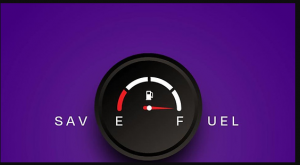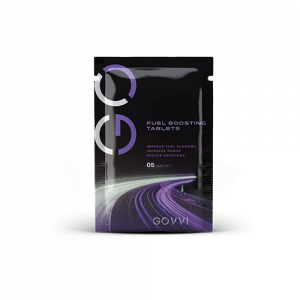
“XTREME GREEN” Turf Challenge: GOVVI Fuel Tabs Receive EPA “Quality Detector Rating” for MLM | SANDY DRAPER UTAH
One Eco-Pack of GOVVI’s Fuel Efficiency Tablets eliminates CO2. Nobel Prize Winning Technology. Peered Reviewed & 5-Star Rated. ‘Best-of-State’
10 am - 10 pm EST, 7 days a week
Customer Service: +1 (833) 437-8887
Help: support @govvi.com
The laboratory that manufactures this technology on behalf of GOVVI is registered with the EPA (Environmental Protection Agency) in the United States. Get More Miles Per Gallon: Govvi members have reported as much as 5%, 10%, 15% and in some cases 20% more miles per gallon: ( Efficient Engine ) ( Boost Power and Performance ). One tablet treats 15-20 gallons and is safe for all vehicles including diesel engines: ( Better for the Planet ) ( Reduce Emissions and Exhaust ). GOVVI formula uses technology developed by Nobel Prize winning chemists and is EPA registered. https://www.alignable.com/carney-md/govvi-usa/govvi-fuel-tablets
Dr. Jose A. Araujo: B.S. PETROLEUM CHEMICAL ENGINEERING MASTER PETROLEUM ENGINEERING, UNAM MEXICO, MASTER PETROLEUM ENGINEERING, OXFORD UNIVERSITY ENGLAND, GOVVI SCIENCE SUPPORT: “The tablet is dissolved once placed inside the fuel tank. One part of the gasoline is composed of octane and the other part is composed of Nonane or N-octane. Later (as part of the chemical reaction) the process goes on to branch. Once branched, it causes octane and cetane to increase up to five points. This chemical reaction generates more power, greater efficiency, and less environmental pollution. By increasing the octane, you will obtain 15% to 20% fuel savings, and your engine will work more efficiently avoiding rattling or engine knocking.”
The 1973 Nobel Prize & GOVVI FROM THE UNSTABLE TO THE STABLE Geoffrey Wilkinson & Ernst Otto Fischer: Wilkinson & Fisher (independently of each other) managed to formulate a stable compound consisting of a metal element in the middle of two five-sided carbon rings. The GOVVI formulation acts on exposed carbonyl compounded branches that are acidic and attracted to the GOVVI tablet’s oxide to initiate a dehydration process. The dehydration process produces a molecule of water (H20), which decomposes at high temperatures releasing a molecule of carbon dioxide (CO 2). This process eliminates the links of the aromatic chains and has a reversible effect on the carbon deposits. In simple terms, the GOVVI technology reverses damage caused by carbonization and reduces further damage to the vehicle and the environment. It also adds energy to the thermodynamic process already taking place inside an engine to deliver more output energy from the engine. This extra energy can be used to either increase engine output power (if the amount of fuel input is kept constant) or reduce the engine’s fuel intake (if the amount of output power is kept constant).
• REDUCES TOXIC GAS EMISSIONS
• DE-CARBONIZES CARBON RESIDUE LEAVING A CATALYTIC VARNISH ON THE ENGINE
• ADDS ENERGY TO THE NET RESULT OF MORE FUEL EFFICIENCY
Molecular Behavior of Petroleum and Oil Derivatives (Gasoline and Diesel) Inside the Combustion Chamber: Oil and its derivatives, gasoline and diesel, tend to behave in an UNSTABLE manner inside the combustion chamber https://govvi.s3.us-west-2.amazonaws.com/GOVVI_Science.pdf. This molecular instability causes the formation of solid residues called oxides due to the acid process in the combustion chamber. This acid process results in CARBONIZATION, and because the oxides are resistant to high temperatures, the carbonized ore adheres to the metals used in the various components of an engine causing build up and eventually damage. Important Note: This oxidative process will occur in any type of engine (new or old) operated by some type of fossil fuel. This oxidative process will cause the engine of your vehicle to consume more fuel, pollute the environment, increase preventative and corrective maintenance costs, and lose power. One package contains five tablets. One tablet treats 15 to 20 gallons of fuel. GOVVI Boost Fuel Tablets …
• Reduce Harmful Emissions
• Boost Power & Performance
• Clean Carbon Deposits
• Improve Fuel Stability
• Improve Fuel Burn
• Improve Mileage
POD #4
GOVVI FACTOIDS:
a. Some people experience 10%-20% improvement in gas mileage while others say they don't experience a clear benefit. What are the reasons for this discrepancy? There are several factors that have a bearing on a vehicle's fuel efficiency, such as numbers of stops and starts, time at stoplights, acceleration when changing lanes, wind, etc., so achieving a scientific apples-to-apples comparison is a little difficult. Some factors that play into fuel performance are the type of engine, as well as the quality of the fuel in the tank. The better the quality of the fuel, the less improvement in mileage you will see. The lower quality of the fuel used, the greater the improvement you will see. Some of our customers report increased power so they are able to drive up inclines faster than they could normally, but this does not translate to better fuel efficiency, rather it allows them to cover more uphill ground faster. Mechanical problems with your engine could also play a role in this. The most important thing is that most people will experience more savings than what they pay for the product, and then they will enjoy all the other benefits discussed here.
b. Have any tests been conducted in a controlled environment to determine the benefit of the GOVVI tablets? Since we market to many industrial customers, we have conducted hundreds of thousands of dollars of testing with primarily diesel engines, and these are carried out under stringent conditions by 3rd party labs. We have seen consistent savings of 3%-15%.
c. How do you recommend putting the GOVVI tablets in the tank if you have a double cap-less tank? One way is to insert the GOVVI tablet behind the flap, and then as soon as you insert the fuel nozzle, it will push the GOVVI tablet into the tank. You can carefully place the GOVVI tablet on the end of the fuel nozzle before inserting the nozzle into your tank.
d. How much of the GOVVI tablet should I use, and is it possible to use too much? You want to use one tablet per approximately 15 gallons, so it could be 13 or 17 gallons. We recommend that you do a double dose on your first tank full to get a cleaning of the engine, and thereafter one tablet per approximately 15 gallons. If you have a 25-gallon tank, you can use two tabs, in other words you cannot over-treat your tank and there is no harm in using a little more. However, there is no added benefit in using more tablets just to try and get more mileage.
e. Can the GOVVI tablets help with smog checks? We have heard several testimonials from customers who had older vehicles that had failed a smog check, but after running one tank on the GOVVI tablets, went back and passed. In some cases, the results came back showing zero emissions. This outcome means that the engine went from a failure to a zero in emissions. There is no guarantee that everyone can get through a smog check this way.
WHAT IS CETANE? Simply put, cetane is a chemical compound found naturally in diesel that ignites easily under pressure. Because of its high flammability, it serves as the industry standard for evaluating fuel combustion quality. Specifically, this measure is referred to as the cetane number. The higher the cetane number, the more easily the fuel can be ignited. This, of course, translates into a smoother running, better performing engine with more power and fewer harmful emissions. The higher the level of cetane, the better the functionality of the machine. Cetane value also relates to how well the diesel engine starts in cold temperatures. ‘GOVVI works perfectly.’
WHAT IS OCTANE? Octane is an organic molecule. It is an alkane of eight carbon atoms (C8H18). It contains several isomers of which the most important is trimethylpentane called isooctane. This is referenced as 100 on the octane scale. Octane or octane number is a measure of the quality and anti-knock capacity of a gasoline engine. A low octane level is equal to a premature detonation inside the chamber, which results in the piston being hit abruptly causing breakdowns such as rattles or chopping of connection rods. ‘GOVVI is the solution.’
Points of Interest: 1) This technology works under a primary reaction without side effects, meaning it avoids oxidative reactions in the primary reaction system. 2) An important environmental benefit is that carbon monoxide is considerably reduced, which helps reduce carbonization on the engine components. As a result the combustion chamber and attached elements, such as spark plugs, exhaust, valves, etc., are not carbonized. 3) In a similar chemical reaction, suspended particles such as nitrogen oxides, carbon monoxide, sulfur, nitrous oxides, and thus all the polluting gases, are greatly reduced as a byproduct of the combustion of fossil fuels when this GOVVI technology is used.
NOBEL PRIZE TECH INTRODUCTION: The history of the Nobel Prize goes back to 1901, the year in which this award was given for the first time. This prize had been established by the will of Alfred Nobel, 1895, who had amassed an immense fortune from the commercialization of dynamite and other explosives. According to his will, the fortune should be managed by a foundation, which should establish a Prize to recognize exceptional contributions in chemistry, physics, medicine and literature. Highlighting the contribution of each of the Nobel Prize winners in chemistry would be an arduous task considering the space limitations of this article. Therefore, only those that involve organometallic compounds have been selected. The 2010 Nobel Prize, which was shared by three scientists, Heck, Negishi and Suzuki, for their for work on “Catalyzed Coupling Reactions With Palladium Compounds”. The usefulness of their research is to allow the increase of the carbon chains to obtain larger and more complex molecules Organometallic Compounds. The difference between the works of Heck, Negishi and Suzuki lies in the different substrates used to bind halogenated aromatics through palladium catalysts. It should be noted that these reactions that were awarded were not the only ones of their kind. Other coupling reactions are shown, but they were not awarded. Among these reactions stand out those of Still, Kumada and Sonogashira.
METALLOCENES: In 1974, Otto Fischer and Geoffrey Wilkinson shared the Nobel Prize “for their pioneering work, carried out independently, in the chemistry of organometals, called Sandwich compounds”, among which ferrocene is mainly found, Figure 10. However, this compound was synthesized for the first time, albeit accidentally and almost simultaneously, by Kealy and Pauson and by Miller, Tebboth and Tremaine, who made a mistake in formulating the compound obtained. It was Woodward and Wilkinson at Harvard University, and Fischer at the Technical University of Munich who quickly understood that the properties of this new compound could not be explained by the structures proposed by its discoverers. It was Woodward who named the new compound ferrocene, by analogy with benzene and its extraordinary stability. The interesting thing about ferrocene is that it presented a new type of metal-carbon bond. This compound also presented an unusual type of molecular architecture that could be exploited to design polymerization reaction catalysts. Likewise, the particular structure of ferrocene plays an important role in the development of the different liquid crystalline phases of the synthesized derivatives.
For More Information Contact:
GOVVI Customer Service
+1 833-437-8887
support@govvi.com
Visit us on social media:
Facebook
Twitter
LinkedIn
Other
Distribution channels: Automotive Industry, Business & Economy, Consumer Goods, Energy Industry, Environment
Legal Disclaimer:
EIN Presswire provides this news content "as is" without warranty of any kind. We do not accept any responsibility or liability for the accuracy, content, images, videos, licenses, completeness, legality, or reliability of the information contained in this article. If you have any complaints or copyright issues related to this article, kindly contact the author above.
Submit your press release




